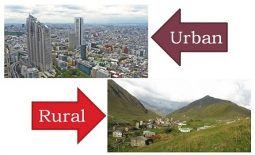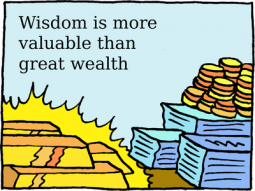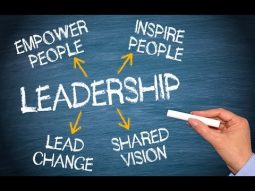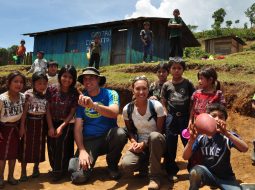Effective Leadership
Good Leaders:
L Listen
E Empower
A Affirm
D Develop
E Encourage
R Recognize
and Reward
George H. Meyers, Ph.D
Section 1
EFFECTIVE LEADERSHIP
Effective leadership increases the performance and productivity of people, the profitability of companies and the capability of ministries to serve their communities and to reach out to the nations.
Leadership is an art and the science of
leading people in such a way as
to gain their loyal cooperation.
U.S. Army
Servant leadership is the model demonstrated by Jesus Christ and is the preferred model in many of today’s user-friendly organizations. True leadership will build loyalty and longevity of the people with whom you work.
A leader earns the right to lead people. In some cases one leads by authority this is positional leadership. In some situations one leads a peer group that has selected him or her as their leader. Others may lead simply because they founded the organization or own the company.
Leadership comes with great responsibility. The leader of an organization is responsible for all the organization does or fails to do. That is the price of leadership.
Using the acrostic L E A D E R I want to share some of the insights I have gained through many years in various leadership roles. The following notes relate to the points in the acrostic.
This material is written as a practical exercise in learning how to lead and manage effectively. Included are four learning sections:
- Effective Leadership
- Leadership and Management How the Roles Differ
- Transition
- Discovering Simple Solutions for Problems
Make disciples in local congregations
that become leaders in the marketplace. |
LISTEN
- An effective leader listens to others. Listening is a fine art that validates the value and feelings of others.
- Good listening is a grace that is rewarded by respect, trust and honor.
- The hearing ear and the seeing eye, the Lord has made both of them. Proverbs 20:12, Amplified.
- Listening well to others gives them hope and a sense of value and importance.
- Listening sincerely establishes a spiritual pathway for them to listen to you. It is wise to respect the knowledge and viewpoint of others.
- He who answers a matter before he hears the facts, it is folly and shame to him. Prov. 18:13, Amplified.
EMPOWER
- Invest time and resources in people to increase their own capacity and to help them empower others.
- Grant authority for the person to advance in the organization; otherwise they will find another organization. Allow them to visit other organizations to learn from them.
- Train your staff in issues of marriage and family.
- Help the person learn to manage his or her finances and investments well.
- Coach them on the job to attain greater capacity, then to multiply that capacity toward greater achievement or productivity.
- Employ the principles of apprenticeship to get excellent results.
- Empower people to become all they were created to be.
- Empowerment is the oil that lubricates the wheels of motivation, capacity building and innovation.
- Visionary leaders see emerging opportunities while empowered managers run the day to day operations.
- Empowerment propels entrepreneurship in today’s knowledge-based economy.
- Avoid micromanagement. Leaders that micromanage others stifle individual initiative and creative energy.
- In the global economy empowerment is the only way to prevent obsolescence and to retain your most creative people.
AFFIRM
- Accept the person’s individual contribution as adding value to the achievements of the group.
- Authenticate the value added by the life of service of a person and a validation of their worth.
- To increase trust and loyalty, value people and affirm that you believe in them.
- An affirmation of a person’s worth confirms that they are approved; giving attention or appreciation to them confirms their value in your eyes.
- Affirmation of a person brings the mobilization of their inner resources.
- Affirming is the Amen in acknowledging the truth and recognition of the contribution of a person to the goals of the group.
- Show by your actions that each individual is important.
- Remember that people are more important than simply what they can produce.
DEVELOP
- A developed person learns how to achieve much, vicariously through the lives of other people.
- Capacity building of people increases their potential for contribution to the society.
- A winning team is made up of the players, team captain and the coach all working together.
- The coach may call the plays, but the team must make the scores on their own.
- True discipleship causes one to reach maturity in the Kingdom of God, leadership in family, the church and society.
- Delegating authority to others is the pathway to developing highly motivated and productive people.
- All leaders must be people of responsibility.
- An effective leader develops people in such a way that they are able to develop others too.
- Train your staff to hear the wisdom of the wise. A wise man listens to counsel. Prov. 12:15
- Facilitate true development of personal growth to retain highly motivated people.
- Development is a process, not an event. It is going from today’s level toward a higher level; a succession of learning, acquiring experience and experimentation that tests new levels of attainment.
- Continual investment in people increases their value to your organization, to their family and to the community.
- Progressive and continual lifelong learning opens new vistas for achievement, development and empowering of others. Learning becomes an adventure!
ENCOURAGE
- Encouragement is an act of love and charity to bring out the best in people.
- Building and maintaining a highly effective workforce requires frequent expressions of encouragement.
- A simple thank you, well done, or good job, even though short on words is long on impact.
- An encourager is able to draw the best from people in a spirit of cooperation.
- In the same way that regular maintenance prevents problems in an automobile, encouragement in the work place helps to promote harmony and good will for a long time.
- Staff must be encouraged to learn new skills, accommodate change and accept risk to keep current in this knowledge-based economy.
- True leadership employs encouragement to build trust and loyalty.
- An encourager helps to lift fallen people to help them get on their feet again.
- Restoration is the fruit of an encourager.
- An encourager is a second mile type of person.
RECOGNIZE AND REWARD
- Recognition is like a ray of sunlight on a rainy day!
- Recognizing a person is the proof that you value them.
- True recognition rewards others not only for what they do, but acknowledges that without their participation, the whole organization might fail.
- An effective leader readily recognizes superior achievement; even when rendered outside the organization.
- Appropriate rewards help to create a culture of recognition, appreciation and high performance.
- Recognition communicates to others that there is genuine value in doing things with excellence.
- A reward is a deposit for some future major contribution to the common good of the group.
- Recognition reinforces that which we want to be repeated throughout the organization.
- Recognition is like glue that brings about organizational cohesiveness.
- Recognition is an investment that proves to a person that he/she is worth much more than what is shown on his/her paycheck.
- To reap the harvest of extraordinary results requires an effective application of empowerment, individual development and recognition of superior performance.
Staff A Valuable Asset
An employee or staff member can be viewed as being on loan from God to you, the leader. You accept that person as he exchanges his time for your money. Each person adds value to the organization that can be increased with effective care and feeding of the employee.
An organization has value in fixed assets, investments, inventory and what is sometimes called blue sky, the perceived value of the name of the company or organization.
Part of the value of a going concern is the quality, longevity and competency of the staff, the human resource value.
Investing in staff equips them for on-going service in increasing effectiveness. Their service to you is a withdrawal from their reservoir of knowledge, strength, talent and creativity. That is why vacations, refresher training and an excellent working environment are so important.
If more is withdrawn from the person than is replaced, the leader has consumed his most valuable resource human creativity!
Staff development helps to replace the vitality that has been
drawn out of your workers as they do their work. |
High staff turnover comes at a very high price. It costs dearly to replace and train through on-the-job training to get a new worker up to speed. This often equals one-third of the annual salary of the worker.
It makes good sense to employ good people and invest in them to increase their value to you, to another company or organization or to the society in which we live, serve and do business.
Employ good people and invest in them to make them more
valuable in every way. Your staff is too valuable to lose! |
Handling the situation when work does not get done
When a task is once delegated to another, it should be taken back only in the case of an emergency. Effective delegation is the antidote for the tendency for some leaders to micromanage the staff they have appointed.
On occasion important tasks just simply don’t get done. There is a reason. There are management techniques that when effectively employed, prevent things from falling through the cracks. Here are some pointers to elicit on-time delivery of jobs:
- Use a job control sheet to assign tasks. They should show expected completion dates and priorities related to other assignments.
- Make the priority of the job clear to the person responsible for doing it.
- The supervisor should review progress weekly with the responsible staff member.
- In most cases Friday is a good day to check progress and review the work for the following week.
- Any new assignment must take into account previously assigned jobs.
- Any added tasks require an adjustment to the priorities or else the worker can become overwhelmed with assignments and not know what to do first.
- Job assignments should be placed in a desktop notebook. This notebook has three tabs:
Priority One Immediate Priority Two Complete as scheduled Priority Three Complete after priorities one and two projects are complete.
- Priority Three projects may have to be eventually reassigned by the supervisor to a higher priority level to ever get done. Reassigning priorities is management in motion.
Avoiding Micromanagement
Highly motivated ambitious leaders may have a tendency to micromanage people they have put in charge of things. This happens when job assignment sheets have not been prepared, priorities not assigned and weekly reviews neglected.
If a leader sees a job falling behind, he or she should go to the person that super-vises the worker who has been assigned the task. Avoid leap-frogging over managers just for the sake of expediency. There is a process of getting jobs finished, on time and with the loyal cooperation of the staff. The leader confers with a manager or supervisor for information about the status of the projects through a review process. Only the manager or supervisor can reassign the priority and get the stalled project moving toward completion.
Weekly Conference with Managers and Supervisors
- To prepare for the conference, managers and supervisors refer to the desktop job assignment sheets.
- Check the priority level and required completion dates for the various assignments.
- Determine if the project is on schedule and if not, what is causing the delay.
- Determine the workload for each staff member and adjust priorities as required to get the most crucial tasks done on time.
Leaders should work through their assigned managers and supervisors.
A leader that micromanages fails to recognize the true value of the
managers and supervisors whom they appointed and put in their
positions. |
Micromanaging capable managers and supervisors hinders morale, causes confusion and destroys the creativity and initiative of high potential future leaders. It eats away at the soul of the most creative people.
Observe how well a person delegates and mentors their subordinates and it is possible to tell how effective that leader will become.
Micromanaging highly motivated managers and supervisors
destroys creativity and hinders productivity. |
Increasing Professionalism as Organizations Grow
Professionalism in handling the business affairs and human resources becomes increasingly important as organizations grow.
Founders, leaders or start-up entrepreneurs soon find that their organization has outgrown the system that used to manage it satisfactorily. The more it grows and expands, the greater level of professionalism and competencies are required to keep things on track.
It is a genuine challenge to manage rapid growth, staff development and control systems all at the same time. This is why the roles of leaders, managers, supervisors and workers must be clearly defined and all levels of staff must grow together in their abilities and capacities.
| MAKING EFFECTIVE LEADERS
People change when they perceive that changing affirms their self-image and promises rewards to better them personally.
Visualize yourself breaking through the current barrier and you have created a pathway to excellence.
A wise person can get along with just about anyone. He chooses his words carefully and lovingly.
If I react negatively to others, it proves they have control over me.
People are drawn to appreciative leaders.
George H. Meyers |
Growth brings its challenges, but if managed properly it results in
greater success in services rendered or profits gained. |
Learning to Lead
- How a person leads others depends to a large degree on his past obser-vations. A leader tends to develop leaders somewhat like he or she has become in style and temperament. Very charismatic leaders like to surround themselves with similar kinds of people.
- Purpose of leadership In most organizations, companies and certainly in families someone has to lead or else big problems occur. Leaders envision or point the way. In addition, they set priorities and allocate resources.
- Leading is a learned skill which prepares a person for a higher level assign-ment. Promotion is based on success. Leaders learn through experience good methods of leading others.
- Historical records of leadership Biographies tell interesting accounts of leaders and their successes. History recounts leaders and their experiences. History recounts leaders and the effects of their decisions. The Holy Bible has many examples of both good and poor leaders.
- Leaders must continue to grow, advance in knowledge, wisdom and effectiveness to prevent stepping back into old habits. Sometimes a new challenge is needed to drive them on. Much growth often takes place in adversity. In II Peter 1:5-6 there is a progression of great promises that become our possession as we partake in the Lord’s divine nature. This progression of growth in faith and ability is additive through diligently adding one trait to another:
- Faith
- Virtue
- Knowledge
- Self-control
- Perseverance
- Godliness
- Brotherly kindness
- Love
The Scriptures go on to explain that if these things are yours and abound, you will be neither barren nor unfruitful in the knowledge of our Lord Jesus Christbfor if you do these things you will never stumble; for so an entrance will be supplied to you abundantly into the everlasting kingdom of our Lord and Savior Jesus Christ. I Peter 1:5,6
Beyond Knowledge
Leadership is more than acquired knowledge. Leadership is taking all that we have, to become all that we can be. Through effectively leading and empowering others, one vicariously achieves greatly through the lives of other people.
| Balancing Vision and Management
New opportunities loom big for visionary
leaders; however, it takes empowered, dedicated,
innovative managers to fulfill the vision.
George H. Meyers |
| Leadership in Relationships
The most important single ingredient
in the formula of success is knowing
how to get along with people.
Theodore Roosevelt |
| Change is a Certainty!
Change is inevitable
but change has its enemies!
John F. Kennedy
Change is best accomplished when
everyone involved sees that they
will be better off because of it.
George H. Meyers |
Learning to do
Doing to learn
Earning to live
Living to serve
The motto of
the Future Farmers of America |
Leaders are all born, and then
they are made into leaders by
someone who believes in them.
I either train others effectively
or I must do too
much myself forever.
George H. Meyers |
Leadership is the art of getting someone
else to do something you want done
because he wants to do it!
Dwight Eisenhower |
Discussion Questions for Section 1
- Does the training/preaching ministry of today’s churches in America prepare people to lead in the knowledge-based economy?
- Do we develop church leaders to be Christ’s representatives to influence communities or to primarily lead within congregations?
- How can we cause church congregations to have a higher Kingdom of God impact within their communities? Are pastors trained for Kingdom of God ministry?
- Think of a leader in your experience whose leadership style and effectiveness you want to copy. List three major distinctive of that leader’s style.
Section 2
LEADERSHIP AND MANAGEMENT
HOW THE ROLES DIFFER
| Home Grown Leaders
Develop your leaders well or
you will have to do all the work
by yourself forever.
George H. Meyers |
| First Steps for Leaders
Accepting and getting along with
myself is the first step toward
getting along with others.
The best way to change difficult people
is to change myself first.
Change must start with me!
George H. Meyers |
| You can only manage that which can be measured and evaluated.
George H. Meyers |
The Roles of Leaders and Managers are Different
There are leaders and there are managers, administrators and supervisors. All are essential to get good results. Let’s look for a moment at the role of managers, contrasted to that of leaders.
Leadership is a noble calling that requires a depth of character, integrity, vision and motivation that causes people to want to follow you. A leader must develop other people that become leaders also.
Definition: The root of the word manage is the Latin word manus, like managing a horse with a steady hand on the reins; or the Spanish word manos for hands and manejo for management.
Certain aspects of management require leadership, too. There is no clear cut distinction that shows who is a leader and who is a manager; however, the roles of each and the competencies vary.
The ability to manage people and projects is an indispensable skill. Management may trace its ancestry to the Sumerian Age or at least to the days of pyramid building. No one is sure, but one thing is clear, managers are required to get work done well and profitably.
Management is the art of getting things done through people (Mary Parker Follett).
Management consists of defined functions (Henry Fayol):
Planning
Organizing
Leading
Coordinating
Controlling
Function or Social Class
Through time the term management began to identify a class of people in addition to a function. For example: with union workers there is the struggle between the union representing the workers and management representing the corporation; i.e. labor vs. management. We see then that management is both function and a class or level in an organization.
The term business administration has been substituted for management in some cases.
What do managers do?
Managers receive instruction, missions or assignments from the executive leadership of an organization or company. The leader articulates the vision, but the manager must analyze or translate the vision into a plan of work; then see to it that it is accomplished.
Without effective management, the visionary leader accomplishes little. By recognizing the differing roles of leaders and managers, large organizations or companies can effectively employ the talents, skills, experience and gifting of people.
By placing people effectively in roles in which they are proven performers, much is achieved. Competency can be evaluated by what gets done.
There are various kinds and descriptions of managers working managers, the absentee manager, reluctant managers or effective managers. Managers employ people and control companies and organizations. Depending on the size of the company, managers may deal with huge numbers of people.
Managers Allocate Resources
A primary function of a manager is assigning people to tasks along with capital to provide what they must have to succeed.
Case Study Mom, Pop and their son Luke
The leader and manager may be the same person in a new organization or small company. However as the company gets bigger, the role of leader and manager should progressively mature. Companies start like the Country Mercantile a Mom and Pop country store. Pop had the vision, did the buying and related to the men around the pot-bellied stove. Mom served the customers and rang up the till. Pop was generous and a friend to everyone.
After Luke came home from his hitch in the Army, he too had a vision for the family enterprise. He wanted to add a gas pump in front of the country store. This increased business greatly and soon Luke opened a car dealership and repair shop. Later he started a tire company as well.
As Mom and Pop turned gray and ventured to Florida in winter, Luke was left in Vermont to handle the entire enterprise throughout the year. As they restructured the business, Mom and Pop were identified as the founders and Luke became the general manager. The elders contributed faithfully when they were back home, but their vision could not advance beyond the country mercantile store.
Luke was good at supervising people and expanding the company; adding a drug store, building supply and real estate company. He converted the Country Store to a 7-11 convenience store. As Luke added enterprises he soon saw that he could not effectively manage them all.
He had to transition from being a manager to a leader. It was hard because he had managed every one of the enterprises that he had started, but he was working long hours and rarely took a day off and it was taking a toll on his family and he saw that he had to change.
He was beginning to learn the difference between being a manager and a leader. For 25 years he used people and developed things, such as new enterprises. As these entities multiplied and prospered he began to learn how to make better use of his employees. He learned to invest capital in things that grow in value (equity) and to also invest in people. Investing in people costs time and money.
| Managers use people to develop things.
Leaders use things to develop people. |
Managers allocate resources among the various demands of program, production, equipment, technology, marketing and human resources. They must grow the capacity of supervisors and other staff at a faster rate than the growth of the enterprise. When staff losses accelerate, it consumes human capital. When staff capacity is lower than the needs of the organization it hinders quality, growth, effectiveness and profitability. The main point is to invest in people, retain them and cause them to grow with the organization.
Investing in people grows the capacity
of the enterprise to build equity. |
Luke successfully made the transition from supervisor to manager and then on to becoming an effective leader. It had been five years since Mom and Pop visited the home place as they advanced in years. They caught up with Luke, now leading the community as the Mayor. They all got in the SUV and drove around town as he proudly took them to visit all of the family enterprises.
As they finished at the 7-11 Convenience Store, they sat down on the bench in front of the store and Pop began to reflect on how it used to be the Country Store, pot-bellied stove, all of the customer friends. He paused a moment and directed his gaze toward Luke. He said, Luke, the years have gone by fast and it is not like it used to be, but wehave really done well.
Luke thought carefully and responded Yes, Pop, the years have gone by rapidly and we have done well. I had good examples to follow.
Pop helped Luke as far as he could, then Luke sought others that added further value to his life.
Luke had become a leader and all three were proud of what they had done together!
Discussion Questions for Section 2:
- How differently do leaders and managers function?
- What are the traits of a good manager?
- What are the main things that managers do?
- What is the history or root of the word manager?
Section 3
TRANSITION
Transition is Moving from
Where We Are to Where We Want to Be
- Transition is a process
Transition is the process of moving from one phase to another. It is forward motion to a better place or a newly stated goal.
There is a popular chorus based on II Cor. 3:18 entitled, From glory to glory He’s changing me. How blessed we are to be in a world of dynamic change. Change should not be done just for the sake of shaking things up, but to keep up with the times.
The Girl Scouts have a saying, Make new friends and keep the old, one is silver and the other is gold. As we experience transition either collectively or individually, we should be able to retain the good of the past. Two singles meet, marry and establish a home. That is really transition, but even greater effect is felt when little miss cutsie is born and then even the cat feels displaced.
Life itself is transitional. Each passing decade brings increase in wisdom, but with it the thinning of the hairline and thickening of the waist! Without change, there would be no improvement. One cannot recapture the invigoration of a balmy spring day or the fresh smell of a newly plowed field. But, having experienced a springtime, one can set his hope on the future spring even during the dreariness of winter. The Proverbs state that to everything there is a season.
- Transitioning from the Old to the New
- Nuggets to help during change and transition.
- Looking ahead and moving on to where we will soon be requires forward focus. Looking back should only be done to avoid making the same mistakes over again.
- Living in the past intensifies the reality of aging, but living for the future brings a sense of new life and new beginnings.
- A good memory and honest evaluation helps prevent repeating previous mistakes.
- Forward motion produces friction and friction produces heat! To make change is not easy and can strain relationships.
- A proven marketing slogan is the tried and true and something new. The goal is to retain proven performers and develop new items from a position of economic strength.
- God will prune the most highly producing vines, that they may produce more fruit. John 15:2
- The Lord’s discipline may seem painful for the moment, but the end result is the blessed fruit of righteousness.
- Young stallions exhibit tremendous energy and excitement, but the mature draft horses keep plowing until the field is tilled.
- Jon Lewis, Director of Research for Mission Aviation Fellowship stated, We are what we measure. Transition denotes a from – to something. There must be a measurable distance; an improvement, otherwise it is just change for the sake of change which may be more disruptive than profitable.
- Helpful Points for Walking through Transition
- We must not let our dreams substitute for God’s plan.
- We must work together to develop a plan that God can re-direct.
- Visualization is important we cannot move to a place that we cannot see ourselves in.
- We must let go of nagging disappointments and failure to reach former goals that may have been unrealistic.
- Prioritize pressure fills the vacuum of the absence of priorities.
- Frustration starts when the last alternative is gone.
- Facts, faith and truth bring light to blind spots. We need clear, written objectives.
- God is sovereign and we must learn to see things from His perspective. He gives us favor even when we are not perfect.
- Reality is seeing what God is doing right and we are doing wrong.
- It takes a long distance to turn a large ship around. Without forward momentum it cannot change direction.
- It is not where we have been that counts, but rather where we are going that measures the value of the trip.
- People who do not add to our life will drain life from us. Our five closest relationships will determine our destination.
- As we honor others, honor will be bestowed upon us. Congratulate the achievement of others to increase our capacity for advancement.
- Exchange is the process of leaving something behind to receive something more valuable and to achieve our
purpose.
- There are those detractors that make greater withdrawals from us than our other good relationships can possibly deposit. This is like the destruction of the body’s immune system, which leaves us too weak to accomplish anything worthwhile.
- To conserve our spiritual energy, we must concentrate our effort on those who are assigned to the same vision team.
- Discernment is determining who has sent a message into our lives and whether it is a blessing or a distraction.
- Development is the effective employment of human and social factors that result in a community of interdependent people uplifting each other at the expense of none.
- During transition you cannot afford to carry those on your back who should be walking beside you and helping to carry the load.
- Determine who is with you in the transition process. Workers often quit many months before they leave. It is best to let those who are not with you leave for other pursuits. They will do better elsewhere and you will do better without them.
- Pillars are those that uphold the work by the tenacity of their faith. Conversely, spiritual parasites want to use your faith to sustain their needs.
- Prioritize your efforts on that which multiplies. Submit to leaders who are secure and will help you multiply your work. Insecure leaders will attempt to control you and hinder progress toward your destiny.
- Any work that does not allow for evaluation is like a moving target. You must evaluate to determine if your motion is taking you forward or backward. Test your work to determine if the results can multiply without an external life support system.
- Maintain an environment of order, avoid clutter and people with undisciplined lives. Develop a productive environment where entrepreneurship flourishes.
- Empower people that are becoming so that your efforts multiply through the Christ-like values that you deposit in their lives. Develop them through leadership and facilitate the enabling power of the Holy Spirit.
- A disciple follows a discipline of increasing; but a convert may change only for an immediate benefit.
One has said, practice makes perfect, but even more accurately another has said, practice makes improvement. (Covey)
Recap
Romans 12:1-2 talks about being transformed by the renewing of our minds to do the perfect will of God. By faith we transition to realize the substance or reality of what we have hoped for, prayed for and even dreamed about.
There is a transitional nature in life itself and change is clearly part of it. From childhood to adult, single to married, young to old, birth to death; all are examples of transition.
Without change there is no opportunity for improvement. Transition takes us from one level of service, leadership or responsibility to another.
Successful transition depends upon our courage to embrace the process and take advantage of its opportunities. The natural man resists change.
To everything there is a season and with
each season there is joy in birthing the new,
but sorrow in burying the old. |
Don’t leave behind those who have
helped you come so far! |
Finally. leave your world in better shape than it was handed to you. The prize before us is great, and new challenges produce greater rewards.
Valuable Quotations
| Modeling
As a leader, manager or supervisor,
one must set the standards
and live them as an
example for others to follow.
George H. Meyers |
Our five closest friends or associates
will determine how high we climb
and how far we go. |
In an interdependent environment,
people lift one another up,
making progress together at the
expense of no one. |
Concentrate your efforts on developing
beneficial things that multiply! |
Discussion Questions for Section 3:
- Transition is change. How can it be done in an orderly fashion that doesn’t disrupt the organization?
- One has said, out with the old and in with the new. How can you capture the vigor of the new and yet retain the wisdom of the old?
- Describe a transition that you have experienced in the workplace noting both the good and the could be improved aspects.
- What is a life transition that you have successfully passed through?
Section 4
Discovering Simple Solutions for Problems
Many volumes have been written on the subject of problem solving. Our goal in this learning activity is to learn together how to cut through complex issues to discover simple solutions.
Purpose
To identify guidelines for use by leaders to solve problems within their organizations.
Objective
To participate effectively in removing roadblocks to success in companies and organizations.
Outcome
Organizations reach their purposes through leaders capable of identifying, preventing and solving problems before they become a hindrance to success or profitability.
Learning Method
Small group active learning. A facilitator coordinating problem solving discussions in a participative way.
Focus
We will focus on solving today’s most pressing issues with a vision toward preventing the same problems from resurfacing in the future.
Start with what you already know. Then train your mind to press on into new vistas. Force your mind to be creative.
Enlist help from your team
Most problems can be solved from within the organization and can be prevented through good planning and forecasting.
Bring in help when needed
Outside advisors/consultants or specialists can be necessary when a serious emergency erupts or a great growth opportunity presents itself.
Problem Solving A Needed Skill
There is no greater contribution one can make to society than to be able to solve problems. Mothers have the greatest potential for impacting our world because they start with a socially unblemished baby and fashion it into an adult that is empowered to make the world a better place.
So much of education is in the preparation of people to solve problems. This is also an important part of leadership.
Effective leaders are skilled at seeing potential problems before they happen and training their employees and staff members to be problem solvers, too. When things are working well, supervisors can handle things just fine. If a situation deteriorates, higher levels of leaders are drawn upon to help find solutions. This assumes that higher level leaders are more experienced problem solvers than the people they lead.
If someone is identified that can solve problems and relate well to people, that person can develop others to impact our world and help us all to live in peace, harmony and prosperity.
There are three major areas that can be addressed to solve problems effectively in organizations, companies and ministries.
| Problem Solving Tools for Organizations and Companies
Evaluate and Strengthen the:
- Organization
- Communication
- Cooperation
George H. Meyers, Ph.D. |
Organization
We live and work in a social environment that requires order. This is especially true in families, companies, governments, religious organizations and the military.
To evaluate and manage (get our arms around) a process or problem, we must first get it organized. To do this it is necessary to:
- Clarify the infrastructure Organizational Chart.
- Identify the authority structure.
- Define who is responsible to whom for what – Job Descriptions.
- Determine order and safety.
- Define accountability, especially for assets, funds and inventory Budgets.
- Control Establish a workable control environment to focus on the organizational purposes and achieve agreed-upon objectives Reports, Audits.
Without a clear organizational infrastructure, guiding principles and accountability, chaos soon develops and relationships are stressed. However, an overemphasis on organization can result in legalism, depressed creativity and stifled initiative. There must be a balance.
| The Cost of Innovation
You can innovate only when you
are willing to accept some mistakes.
Alan Loy McGinnis in
Bringing Out the Best in People |
The Organizational Chart is like a snapshot of the organization in motion where it is made clear where everyone fits in and how it is possible for all to work toward a common goal.
One has stated that radical leadership is getting team input and also raising up your own replacement. Leaders tend to make unilateral decisions and not start soon enough to develop a successor.
Communication
Communication is like an impulse flowing down a nerve to alert the brain of peace and order, or a pending disaster.
In the Army, rumor control is only managed by keeping people informed. Lack of appropriate communication often leads to rumors in organizations which seriously affect morale. When information is withheld or inadequate, people base their beliefs on speculation.
Fight rumors with facts.
Well-informed people feel a sense of belonging to the group.
People lacking timely information
sometimes develop
an us and them attitude. |
Style, method and frequency of communication releases is a policy decision of an organization or company’s leaders. It is not appropriate to share all things, but to be systematic and generous in sharing those things that are of interest and benefit to the staff. It is a wise investment of time that helps to avoid misunderstandings and keep everyone on the same page.
When communication is inadequate, the typical employee often suspects the worst, especially if he sees people arrive dressed in dark suits and escorted into offices for meetings with doors kept closed and meals brought in by caterers. The worker imagines, Is the company going bankrupt? Will there be layoffs? Will I receive this month’s salary? Is my retirement package safe? What about my insurance program?
In the environment of doubt, the mistrust of leaders and management has an opportunity to escalate. As the employee works, his mind wanders to the needs of his family, his house payment and car payment and every uncertainty imaginable.
These things happen in both organizations and commercial companies and are often highlighted in television news.
There is a better way! Appropriate disclosure of important facts in a systematic and timely way controls mistrust and increases productivity. Good communication helps to maintain priorities and to keep the entire workforce focused on the main goals.
Resistance to either receive or give communication is usually motivated by fear of the anticipated outcome.
Communication is:
- A willingness to listen
- Caring enough to ask
- Boldness to comment
- Honest enough to admit fault
- Loyal enough to act
- Eager to correct and set things right
|
Cooperation
Cooperation is so important that it is often spoken of as a spirit of cooperation.
An effective leader will be able to gain the willing cooperation of those for whom he/she is responsible.
The concepts of cooperation and teamwork are interchangeable.
T Together
E Everyone
A Achieves
M More
Cooperation is very much about having a good attitude.
- Cooperation is the function of thinking and working together for a common purpose.
- Cooperation indicates a willingness to help one another or to work together to achieve a shared vision.
- People cooperate to achieve mutually beneficial goals.
Cross training promotes teamwork in action.
Through teamwork, specialization is directed toward developing multidisciplinary skill sets and makes it possible to build mutually beneficial models. Every position needs a trained back-up person.
Indicators of cooperation:
- Employees helping one another both on and off the job.
- Participating in community and extended family activities and events.
- Management striving to crucify the problem, not the worker.
- Willing cooperation results from trustworthy leaders and managers.
Examining the Roots of Conflict
When conflict occurs, there is always an underlying cause. These causes become the devil’s tool to turn people against each other.
Inspect and evaluate appropriately to discover weaknesses, pinpoint errors and fix problems quickly. Include the person who made the mistake in the problem-solving process. Take the person to a private place, listen to their side of the story and do any correction or reprimands only in private.
Inner office intrigue, mistrust, envy, jealousy and slander kill the soul of a cooperative environment. Leaders must cut off conflict at the root aggressively and rapidly. Sometimes leaders withhold information as if pretending that a problem does not exist. Or they may procrastinate on problem-solving in the hopes that the situation will resolve without action.
Effective leaders rapidly seek out the root cause of conflict. By rapidly solving conflict, relationships are restored and team viability is strengthened. Confidence increases in the problem solving ability of the leaders.
Recap
Effective and wisely employed investigation will reveal the root of the problem.
- What?
- With whom?
- To what effect?
- At a specific location?
- For a defined purpose?
- For some definable personal gain?
- Who are the injured parties?
- How will restoration be carried out?
- What is the plan for restitution to relieve loss or hurt to the injured party?
Let the effect of the injury be measured and then cancelled by a plan for generous restitution to the injured party.
All of the above questions apply for hurt experienced by individuals, married couples, business people, special groups and ultimately to the society at large.
If we would practice restitution and restoration to replace that which was lost, rather than punishment and incarceration alone, the society would more clearly understand the effect of crime. Crime is committed not only against the individual victim(s), but in reality against society itself.
Part of leadership is to prevent every major problem possible and also to make right the consequences of bad things being done, especially to the innocent or helpless.
In solving problems we can:
- Clarify facts on the problem.
- Review the cause such as fine-tuning the organizational structure.
- Identify what is ideal.
- Visualize the improved status after the problem is solved
- so far as it depends on you, be at peace with all men.
Romans 12:18
Discussion Questions for Section 4:
- How does one prevent small problems from erupting into bigger ones?
- How do you control destructive rumors?
- Discuss ways to apply restitution to those harmed.
- Describe how you can put some of these principles into use in your organization or company.




















